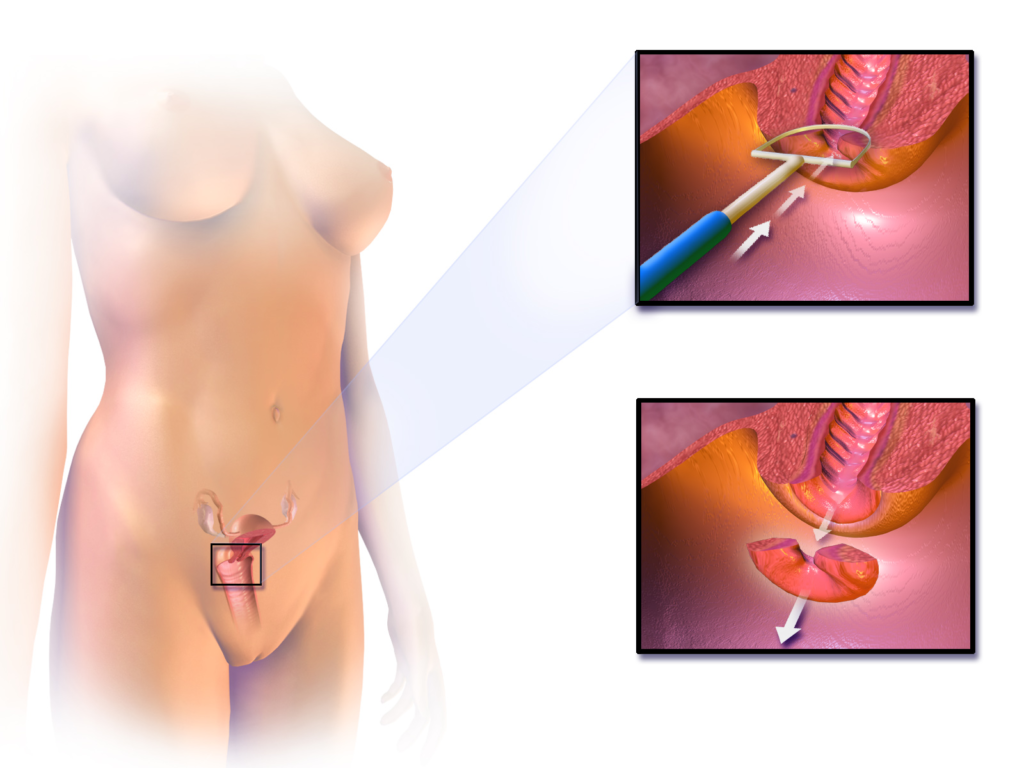
I remember the moment when I found out that I had cellular changes (cervical dysplasia) on my cervix and that I had tested positive for HPV. My mind started wandering to thoughts of cancer and chemo and losing my hair and leaving my kids without a mom. Most of us (if not all) have known someone that has fought a battle against cancer so of course it's natural that our mind will go there immediately.
It's also not a surprise that our doctors go there, too. The 5-year survival rate of cervical cancer is 66%.1 That's not as bad as it could be, but it's also not great.
As a doctor, their primary concern is to keep you alive. Luckily, when it comes to cervical cancer you can actually catch it early and drastically increase your survival rate. That's where pap smears and LEEP, or sometimes called LLETZ, procedures come in. But there are risks that most doctors aren't aware of.
It's a way to remove abnormal tissue from the cervix. An electrified wire is used to scrape off the effected cells and then the tissue is cauterized (burned) to stop the bleeding.
LEEP = Loop Electrosurgical Excision Procedure
LLETZ = Large Loop Excision of the Transformation Zone

As with any surgery, there is a possibility of an infection or bleeding as well as build up of scar tissue. These are the risks that most doctors discuss with their patients.
One particular area of concern is the depth to which surgeons remove cells. Based on the findings of research studies, much of the commercially available equipment go in much deeper than what is necessary.2 This means the surgeon would take more cells than necessary and it could cause more damage to the cervix, which can lead to cervical insufficiency or an incompetent cervix. This means that the cervix is unable to stay closed during pregnancy and can result in a miscarriage.
What most doctors don't disclose (because most of them aren't aware of) is that a LEEP procedure can cause sexual dysfunction. Currently there are no standards or oversight on how deeply to go when removing cervical cells which is why the equipment that is available goes much deeper than necessary.
The cervix has 3 pairs of nerves (hypogastric, pelvic, and vagus)3 which makes it one of the most highly innervated organs in the body. Sadly, many doctors are not aware of this because for many years this information was not in the OB/GYN text books. Yes, you read that right. The obstetrics and gynecology books did not include the full innervation of the cervix and some still do not.
Nerve damage is serious. Nerve damage causes problems.
In addition, a 1960 study incorrectly stated that there was not much sensation in the cervix and this has been perpetuated through the medical community for years. Even though the innervation of the cervix has been well documented, doctors often tell their patients that the procedure is painless and harmless thus completely ignoring the neurobiology of a female.
This leads to many people opting to get the procedure without hesitation because let's face it... being alive is better than not. But many are left with a severely altered life experience and they are unable to enjoy sex.
Many people experience sexual dysfunction after a LEEP procedure and most doctors ignore it, disregard it, and flat out don't believe the patient. This means that they are not reporting it which also means that doctors still don't realize how big the problem is.
Some of the sexual side-effects after a LEEP procedure are:
In my experience as an orgasm coach since 2018, I have learned that many of my patients that come to me with "unexplained" orgasm issues often had a LEEP procedure immediately prior to the onset of symptoms. The way it presents is different but here are the common problems I have seen from my clients that have had a LEEP procedure.
So, what do you do now? You're probably feeling a lot of emotions: scared, overwhelmed, sad, and maybe even angry. It's natural to feel all these things after learning that you had a procedure that you thought was totally safe. But don't worry! There are steps you can take to improve your sex life. In fact, I've had clients of mine have a sex life that is even better than before because the steps you take to re-engage your sex drive and heal your cervix are steps that help anyone have a better sex life.
When you work on physical, mental, emotional, and spiritual at the same time, you will heal from trauma. You can focus on just one area but all areas of ourselves are connected. At some point, you will need to address all four areas to release the trauma that is stored in your body.
As you start working on the 4 areas of self, your subconscious mind will try to keep you from doing things that are uncertain. This process is biological and is driven by the fight and flight stress response.
The first part of the stress response cycle is the Social Engagement System.4 It's an ingenious part of our biology that has us look for help when we get stressed. This is why community is an important part of the trauma healing process.
When you are in a supportive community you will feel safe. It is only when you feel safe that your body can truly heal and release the trauma stored in your body.
When you learn how to connect to your inner wisdom, allow yourself to experience the emotions in your body, and are compassionate and understanding in your mind, you will release the trauma in your cervix. Pain subsides, you are less anxious, you stop worrying about whether or not your body will heal because you learn to trust your body. Your body will feel safe to experience pleasure again. You will be able to connect deeply with a partner in a way that you may have never been able to before.
To heal after a LEEP, I suggest the following: